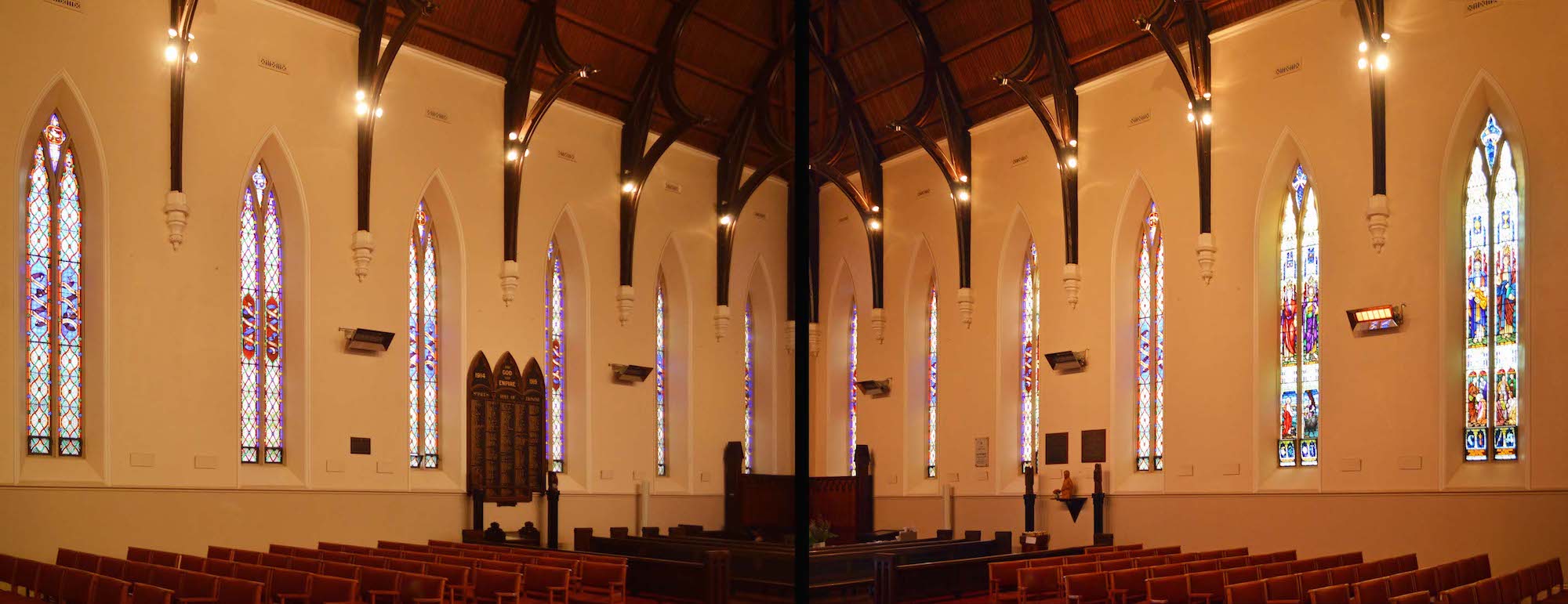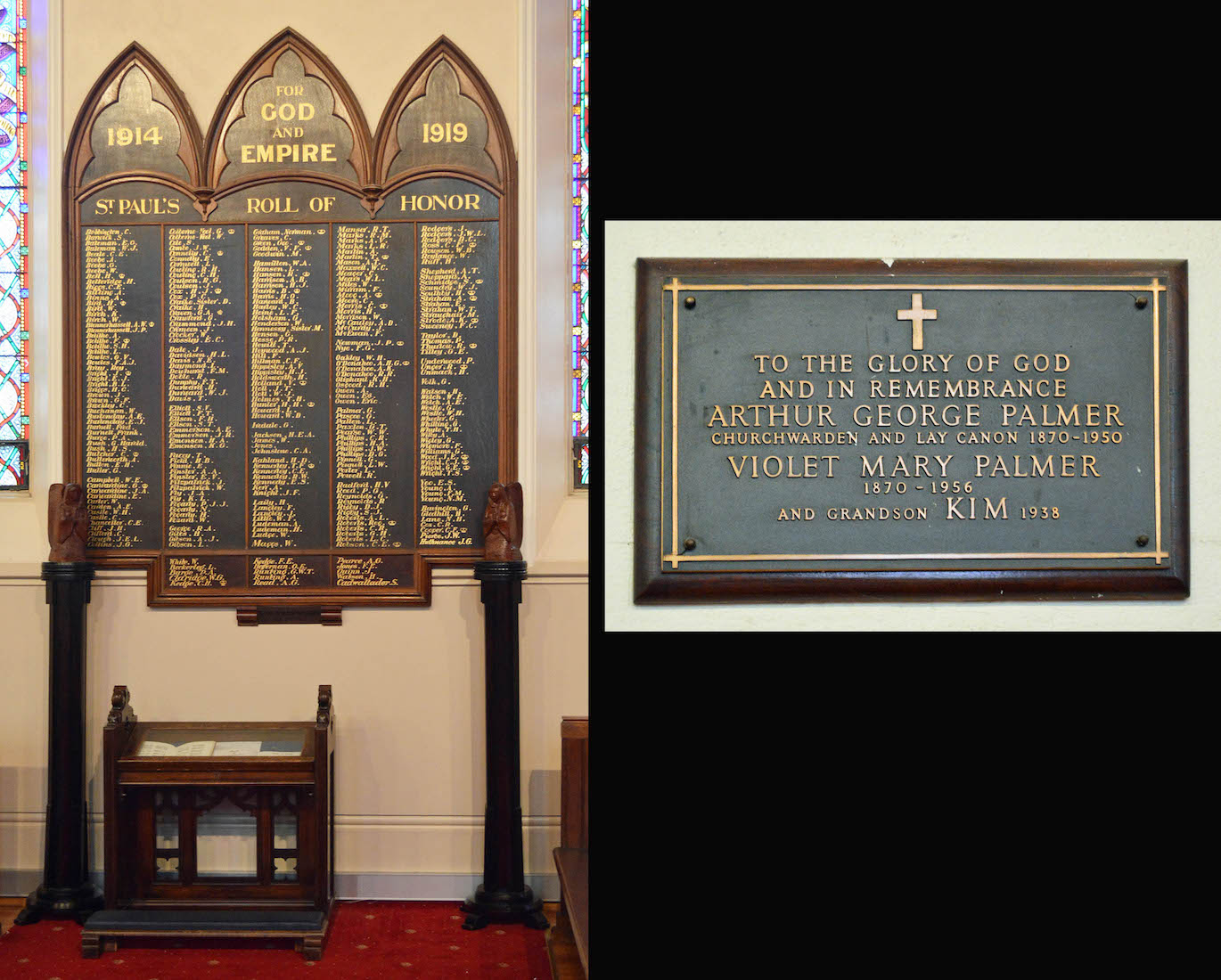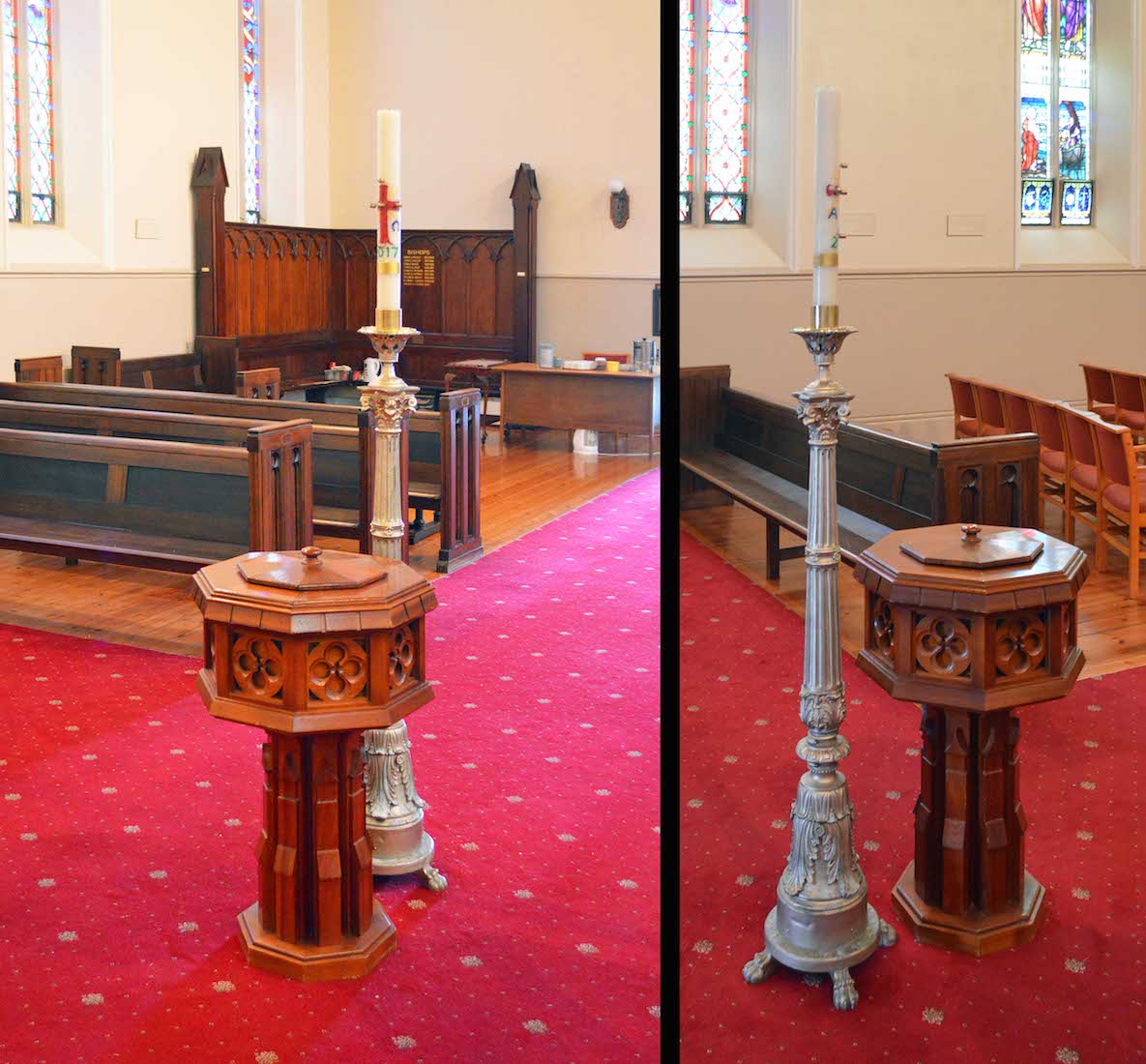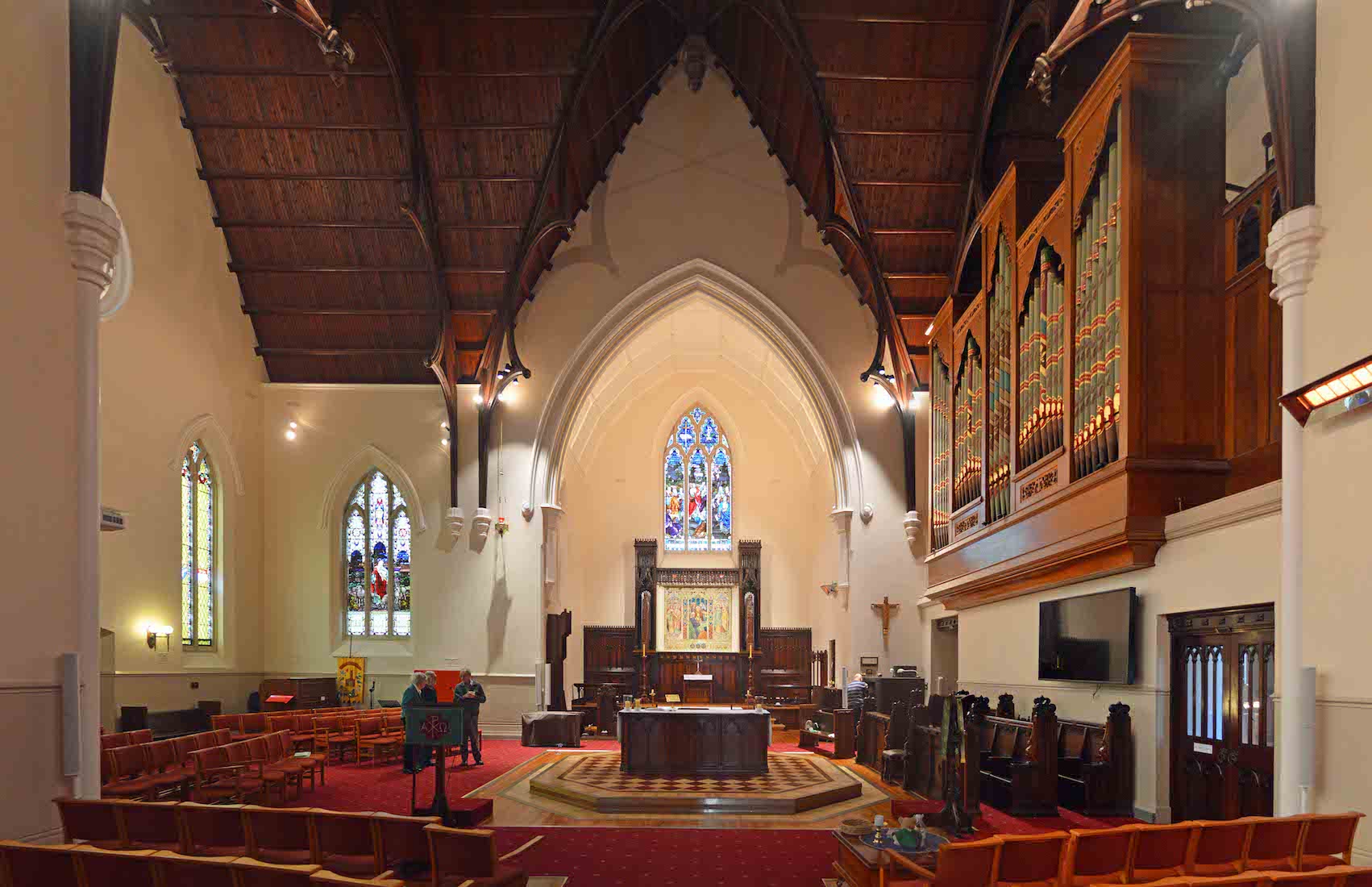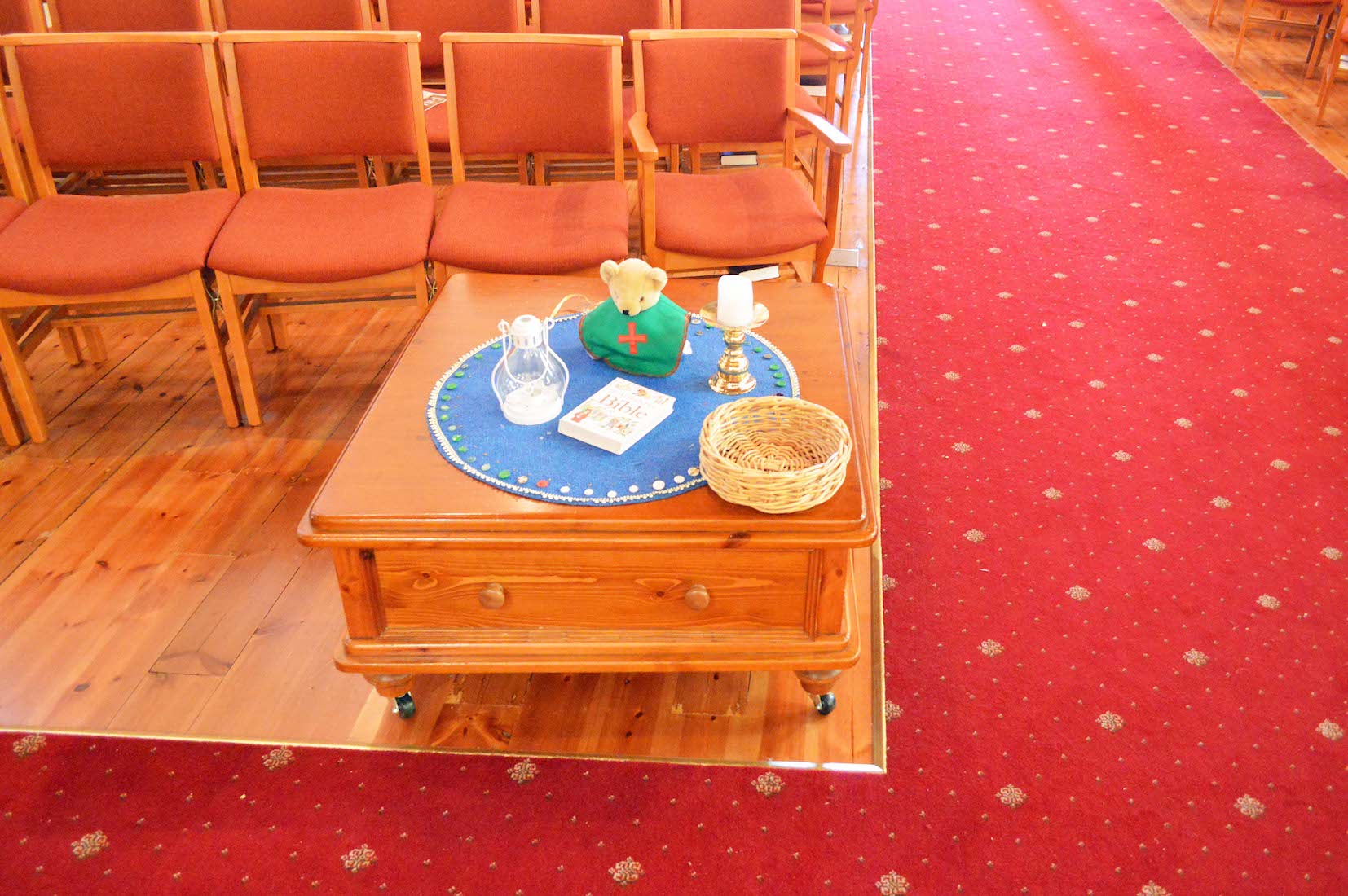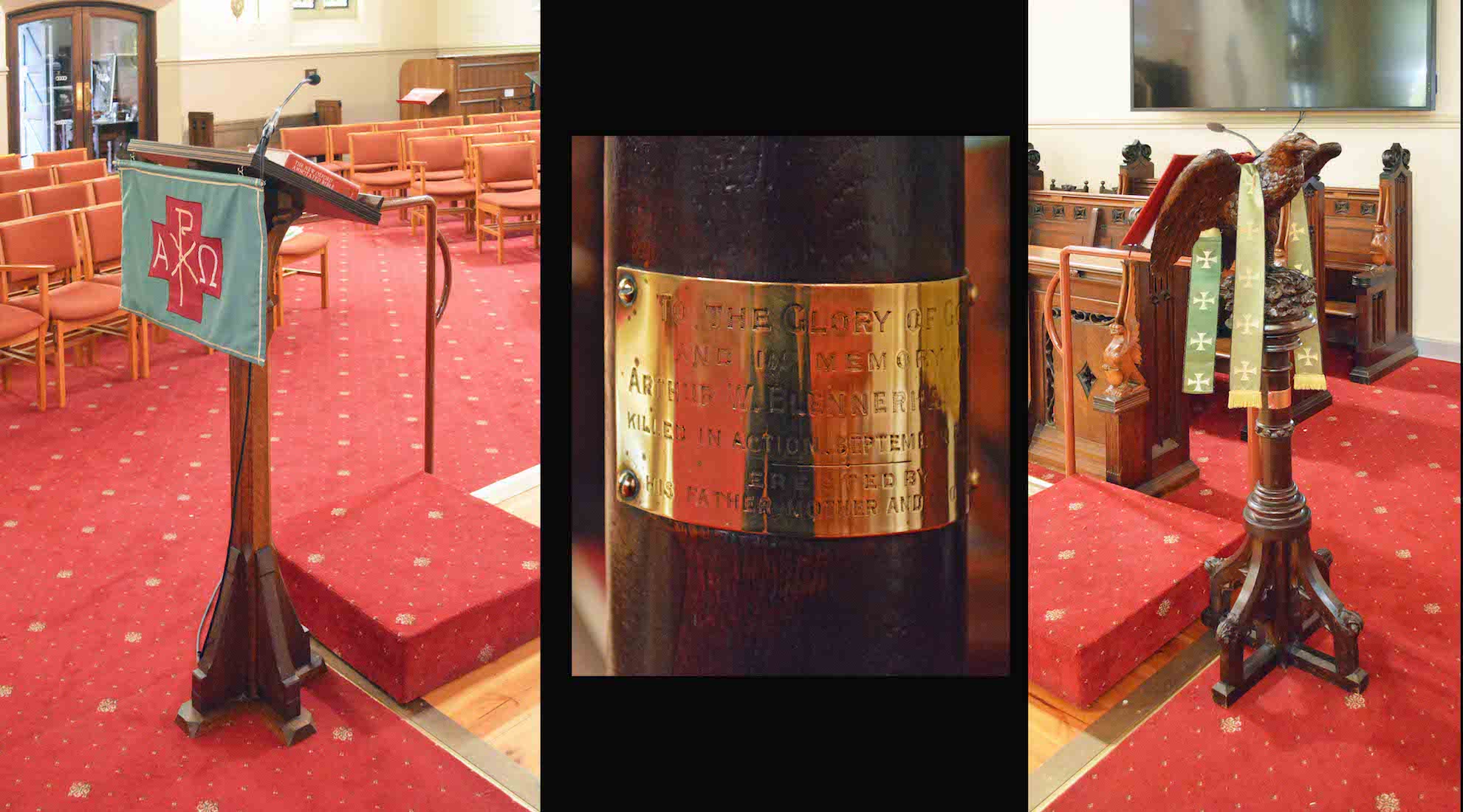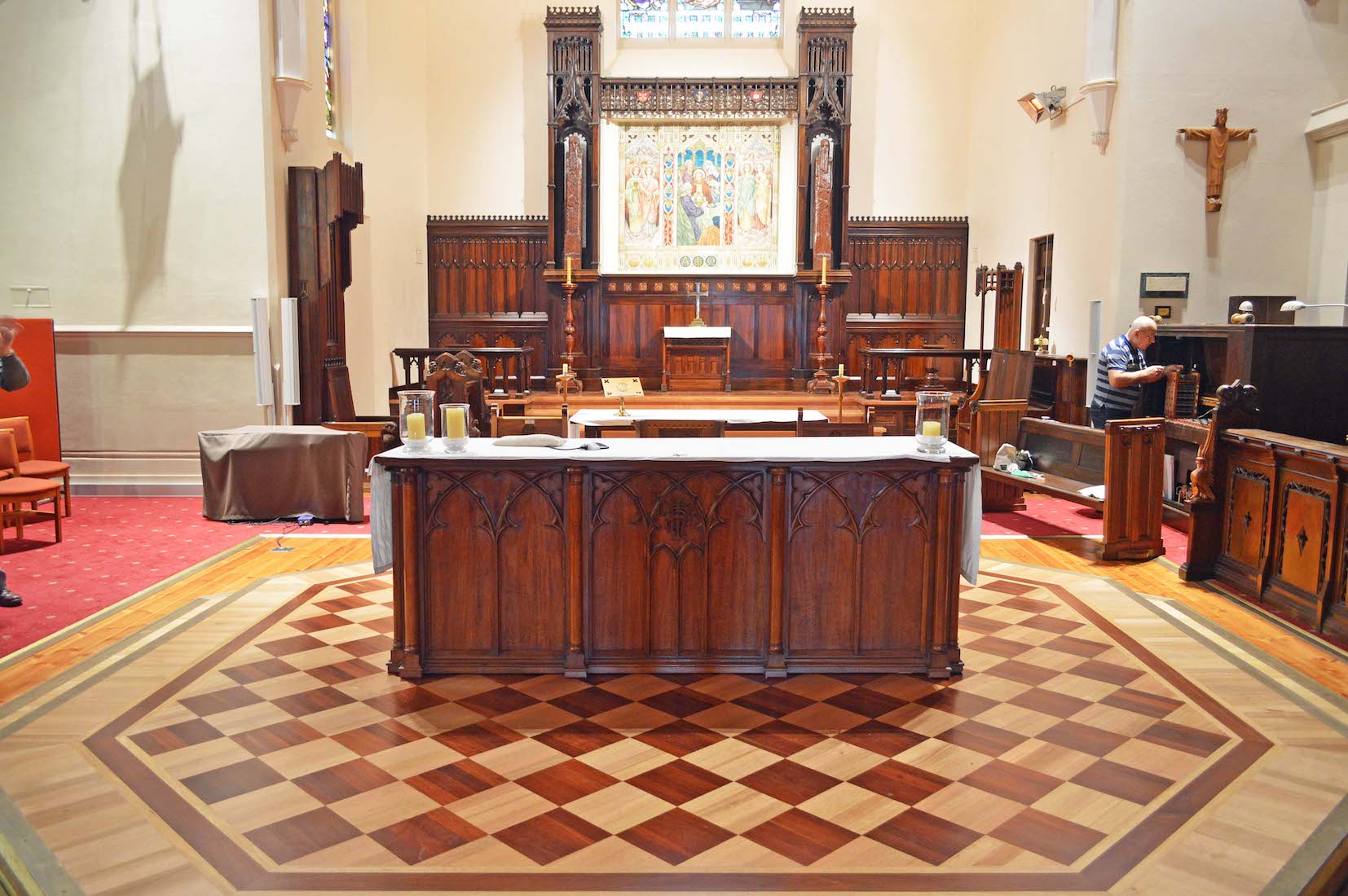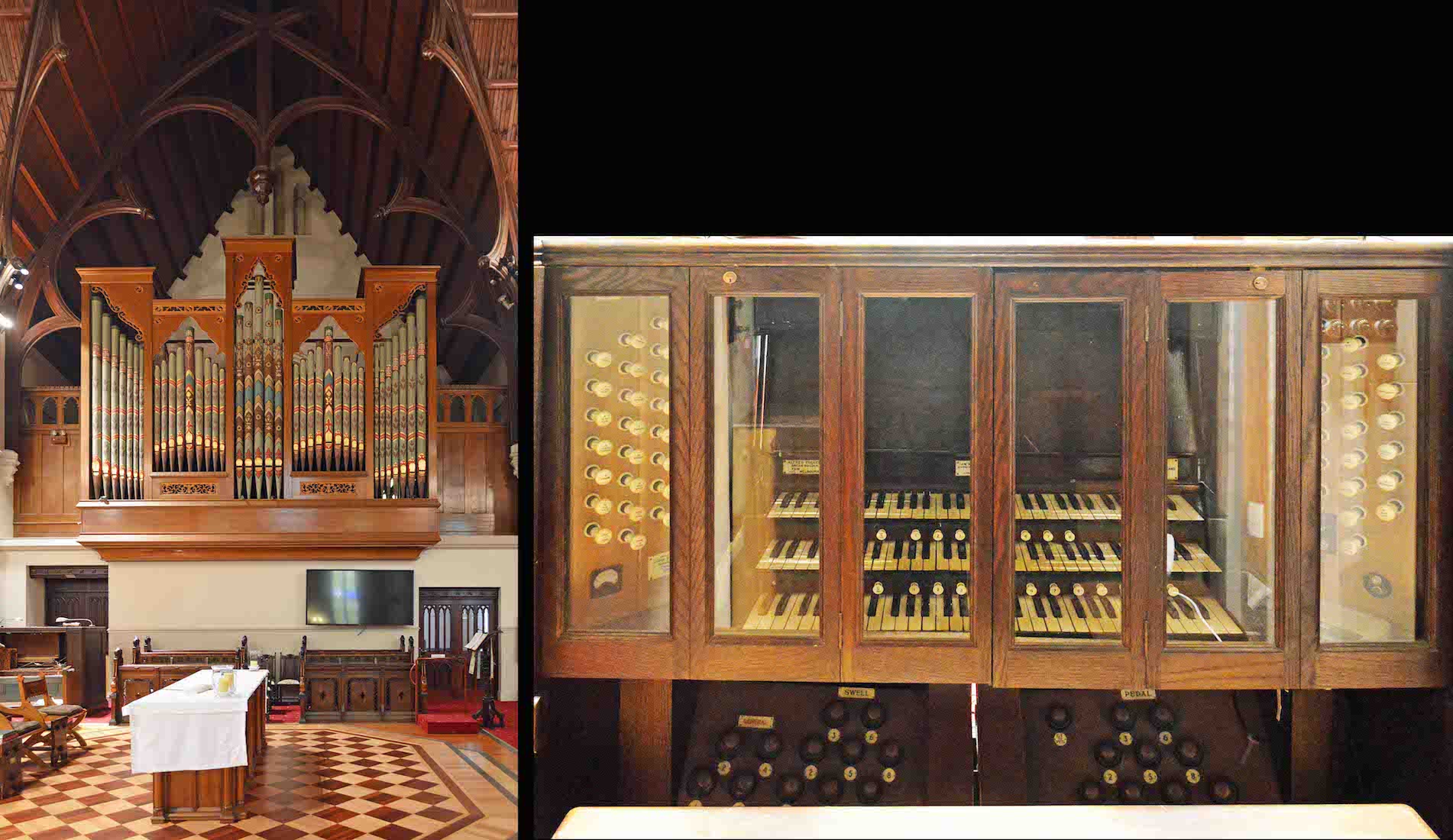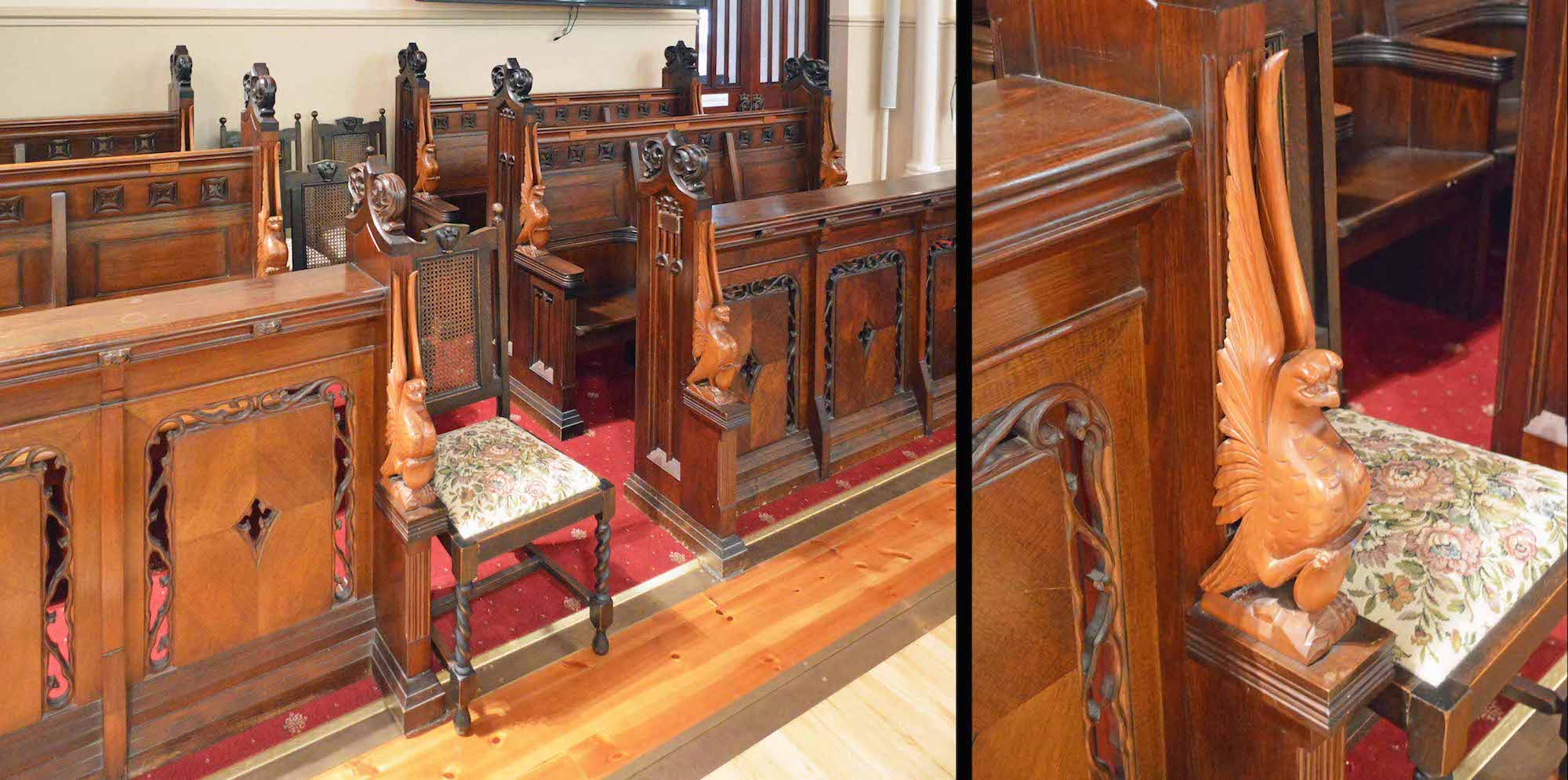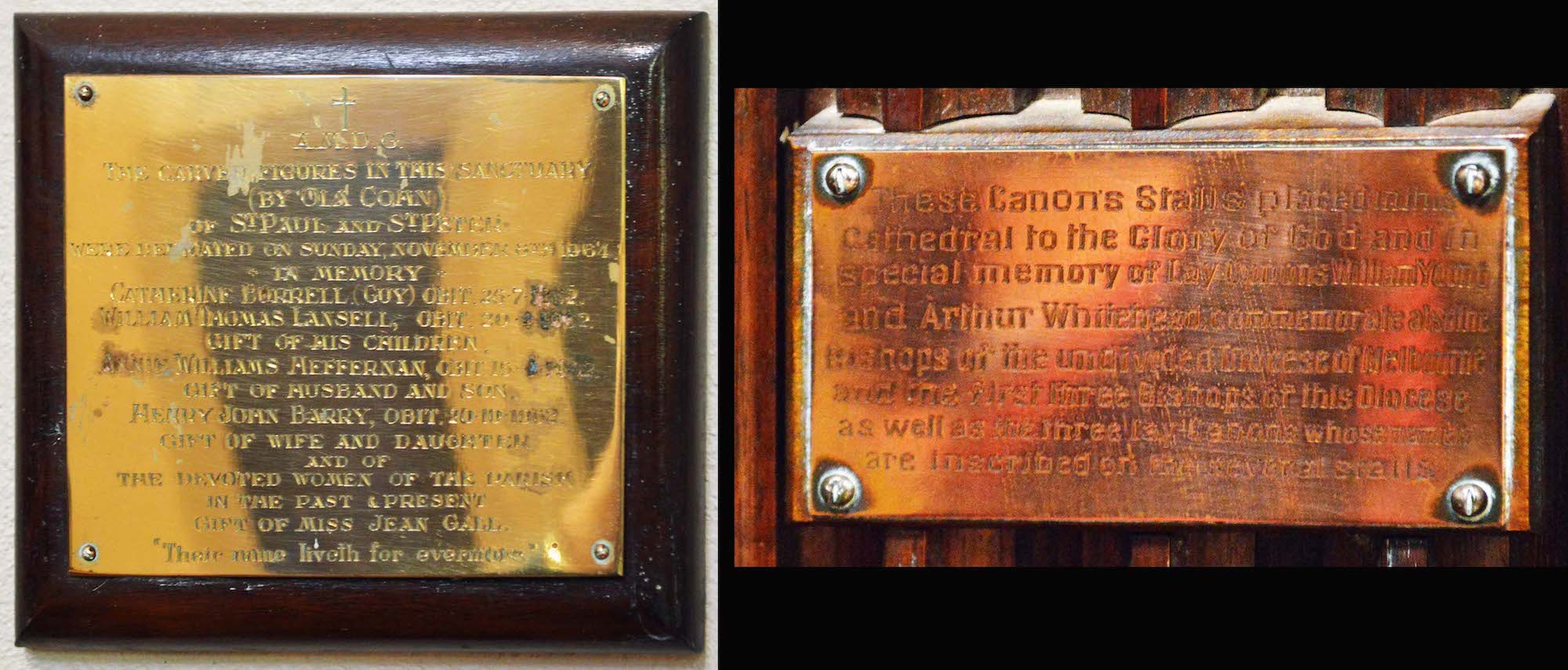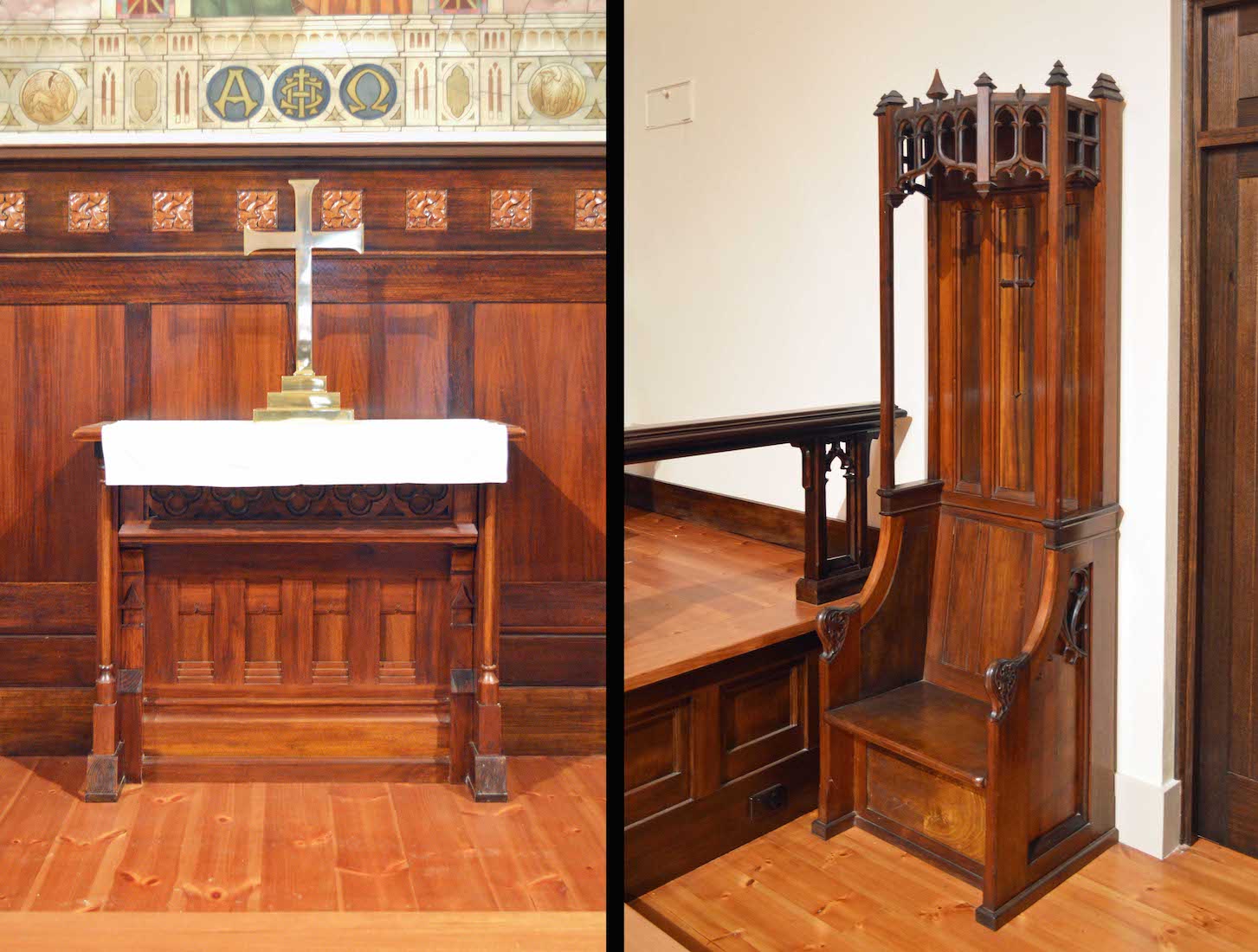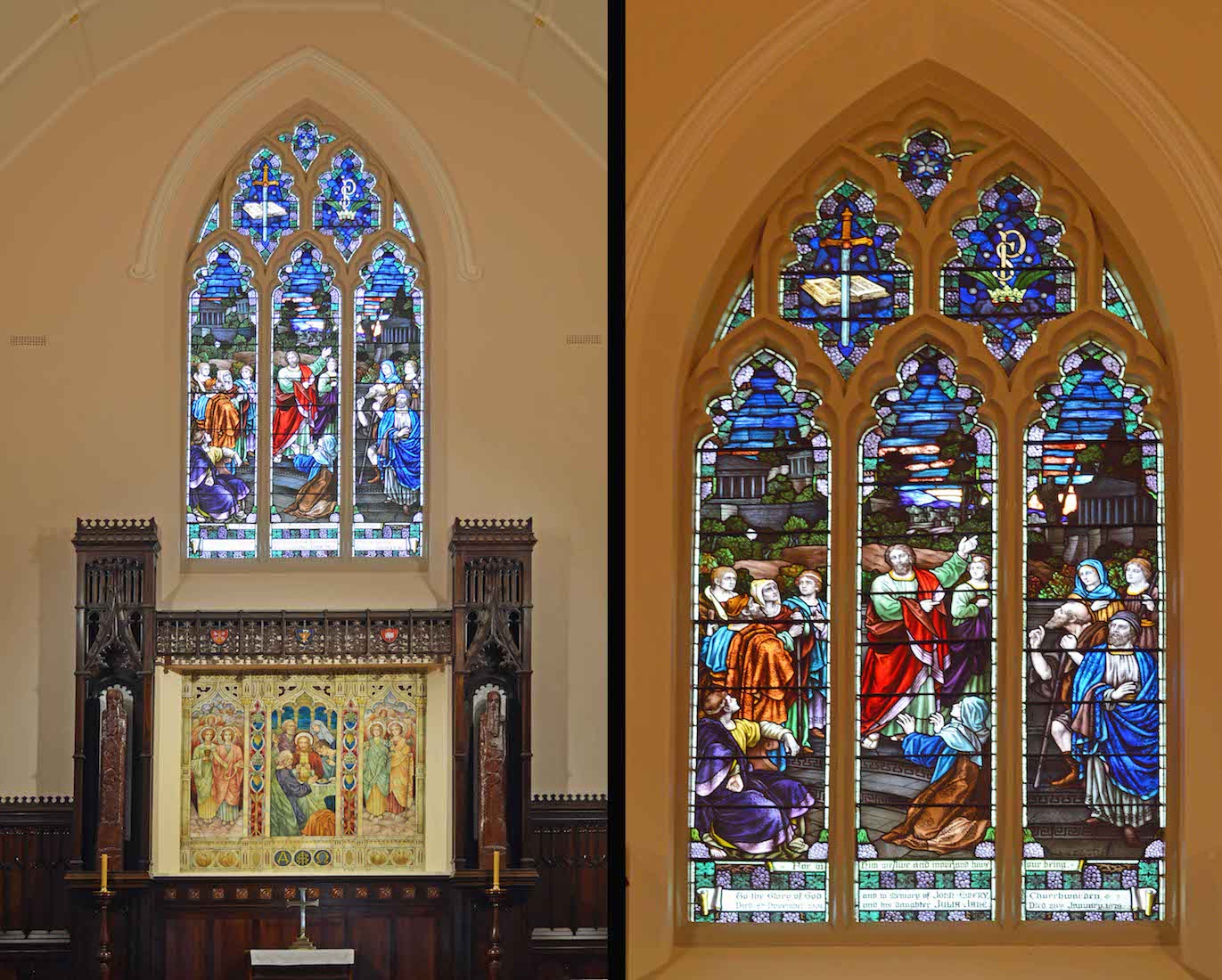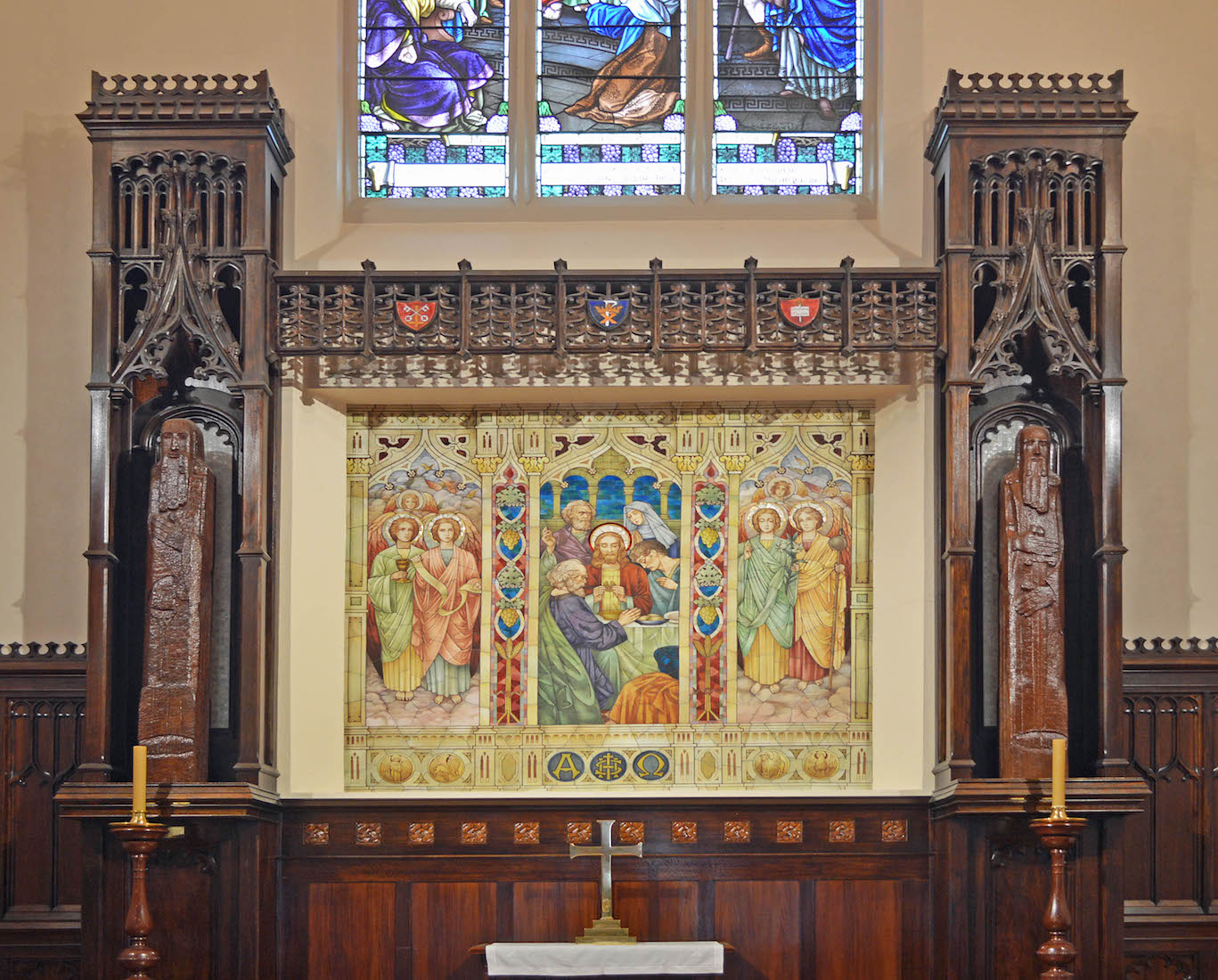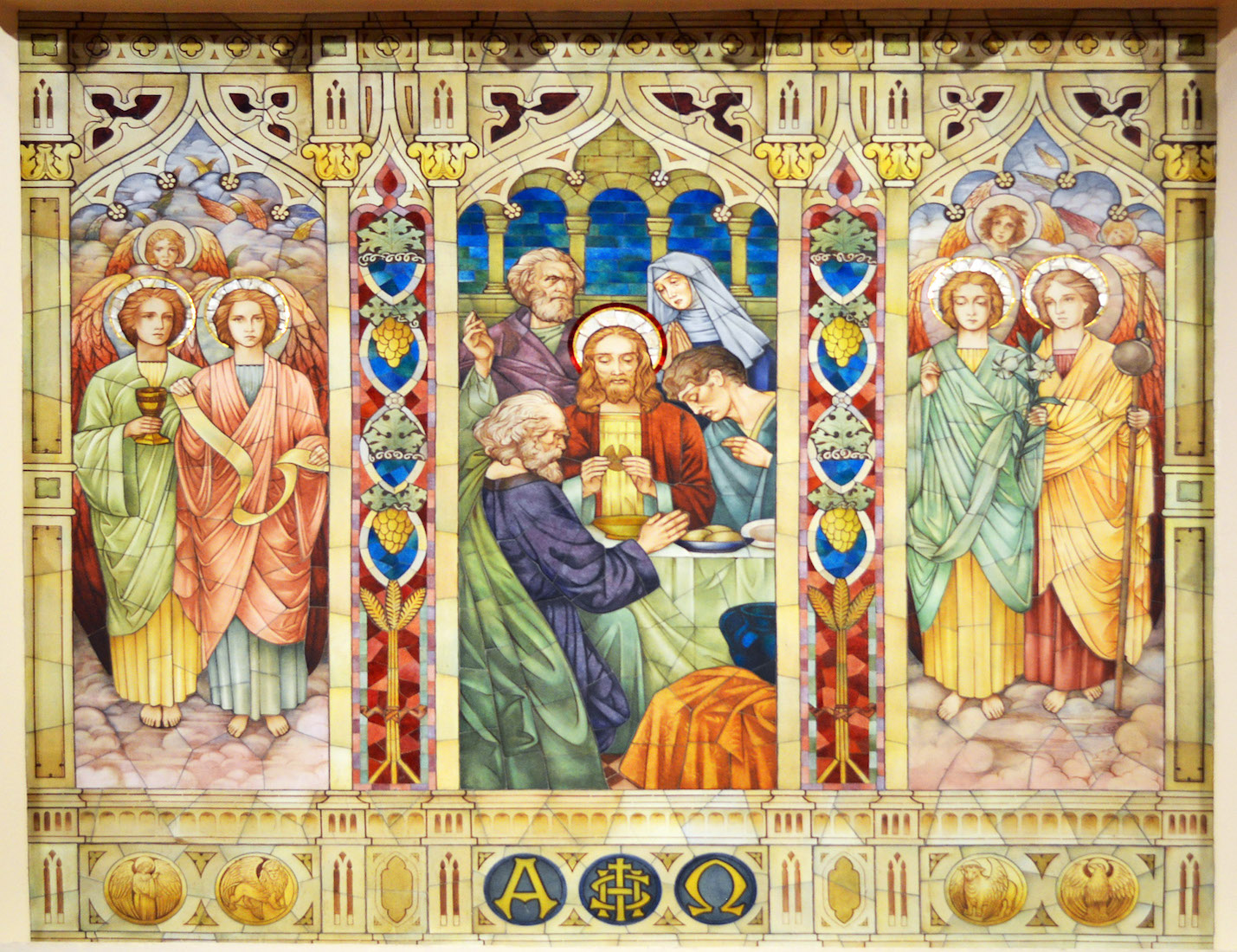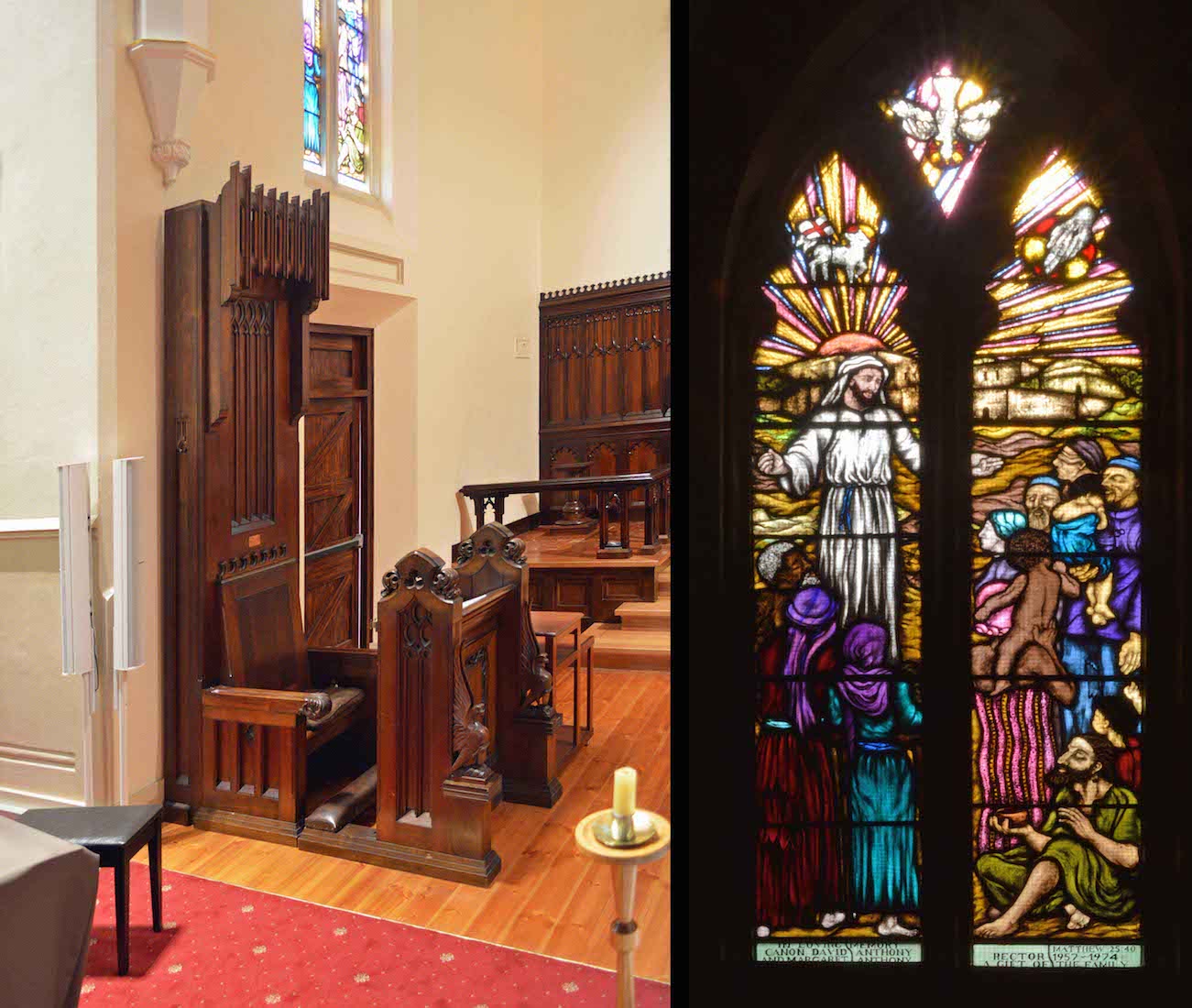
There are six windows along the North wall of the nave. From left: • Stand fast in the faith. Watch and pray. • Blessed are the pure in heart. Ask and it shall be given you. • Holiness becometh thine house. St Bartholomew with scroll: ‘The wall of the city had twelve foundations.’ Below: ‘He called twelve.’ • Speak not evil one of another. For me to live is Christ. • St Andrew and St James. • St Peter and St John. SATELLITE VIEW
22. SOUTH NAVE WINDOWS
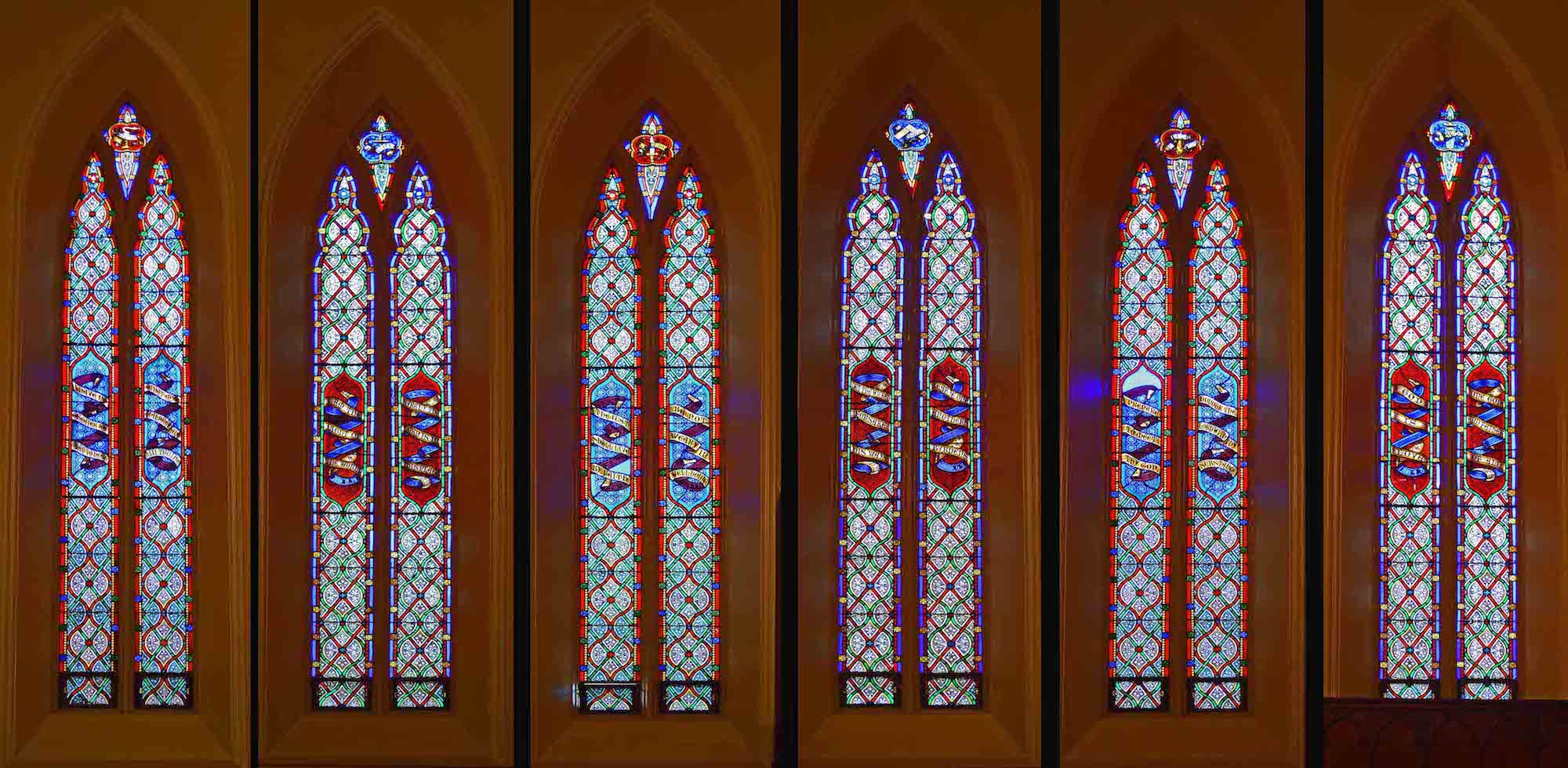
The six South nave windows from left: • I have no greater joy than to hear my children act in truth. • I am the Light of the world. Surely the Lord is in this place. • The just shall live by faith. Be not weary in well-doing. • Let the wicked forsake his ways. Bear ye one another’s burdens. • Prepare to meet thy God. Honour the Lord with thy substance. • God is love. One God and Father of all.
23. NAVE WALLS
From the altar the nave side walls look like this. On the left (South) wall we notice a plaque and an honours board; on the right (North) there is a shrine.
24. SHRINE
This shrine has five elements. Central is a sculpture of Madonna and Child, given by Eileen Pike in memory of her late husband Ivan. This sculpture was crafted by Austrian sculptor Leopoldine Mimovich. On either side is a pedestal supporting an angel. And on the wall behind are two memorial plaques which appear to be unrelated to the shrine.
25. HONOURS BOARD AND PLAQUE
The plaque is in memory of Church Warden and Lay Canon Arthur George Palmer and family members Violet Mary Palmer and Kim. The Roll of Honour board lists those associated with St Paul’s who gave their lives in the 1914 – 1919 War. Below is a small desk containing a Memorial Book.
26. BAPTISMAL FONT AND PASCHAL CANDLE
In the centre of the nave is an octagonal wooden stand supporting the baptismal font. Baptism is regarded as entry into the Anglican Church and a sign of commitment to Christ. Adjacent to the font stands a paschal candle – symbol of the light of Christ, and of special significance around the time of Easter.
27. ALTAR AREA
This photograph shows our next area of exploration. To our left is the North transept, ahead is the altar with the sanctuary beyond, to our right is the large organ occupying much of the South transept, and to our extreme right are the doors leading through to All Saints’ Chapel. Closest to us is are a children’s area, and two lecterns.
28. CHILDREN’S AREA
Children are an important part of any church community, and most churches make some provision for smaller children to be occupied during a worship service. More commonly at the back of the church!
29. LECTERNS
There is a lectern on either side of the altar. In fact, here, in the absence of a larger pulpit, we probably have a pulpit and a lectern. From the pulpit the message for the day is presented, and from the lectern the Bible readings are read. Most commonly the pulpit is on the North side of the nave – I wonder why this is? Here, the lectern has a small gold plaque on its supporting column, in memory of Arthur W. Blennerhassett who was killed in action on 3rd September 1916.
31. ORGAN
The organ, built by Alfred Fuller, was first used on Sunday 29 April 1883 and was centrally placed on a rear gallery. This instrument was extensively rebuilt and enlarged to three manuals in 1957 by Hill, Norman & Beard (Australia) Pty Ltd. Fuller's mechanical action was discarded and a new electro-pneumatic action installed. The console, built by the English organ builder J.W. Whiteley, came from St Andrew's Cathedral, Sydney.
32. CHOIR STALLS
The choir stalls are quite unusual in design with carved perforated front panels. Seating is in groups of three, and at each end of each ‘pew’ is a finely carved eagle(?). The different timber used probably indicates that these were a later addition.
33. CRUCIFIX AND CROSS
On the wall is a carved Crucifix showing a robed Christ wearing a crown. There is also a very attractive processional cross of Celtic design in silver and blue. At the centre is a small golden image of a lamb (the Lamb of God) with a cross extended as a staff and banner. In other versions, this banner is white and carries the red cross of St George – an image carrying its own Christian symbolism, as well as indicating the English roots of the Anglican church.
34. SANCTUARY PLAQUES
The plaque at left is a dedication of the figures of St Peter and St Paul on either side of the reredos. These were carved by Ola Cohn and presented in 1964. Ola Cohn (1892 – 1964) was an Australian artist, author and philanthropist, born in Bendigo, best known for her work in sculpture in a modernist style. The plaque at right is a dedication of the sanctuary canon stalls, which were given in memory of Lay Canons William Young (?) and Arthur Whitehead.
35. RETABLE AND DEAN’S CHAIR
The little table at the back of the sanctuary is called a retable. It is used during the administration of the Eucharist. On the South side of the sanctuary is a chair with a high back – the Dean’s stall.
36. SANCTUARY EAST WALL AND WINDOW
Above the retable is an interesting reredos, and above this the East window. The window pictures the apostle Paul speaking to the people of Athens: ‘For in him we live and move and have our being.’ (Acts 17:28)
37. REREDOS
The reredos below the window has a central mosaic with two carved saints – one on either side. To the left is St Peter, to the right, St Paul. As we have already seen, these were carved by Ola Cohn and presented in 1964. The carving is unusual, but careful scrutiny reveals St Peter holding two keys (of the kingdom), and Paul holding his sword – traditional representations of these saints.
38. REREDOS MOSAIC
Technically, this is an opus-sectile mosaic of the Last Supper, with pieces of marble cut and placed to form the picture. The result is a beauiful and colourful depiction of this important event in the life of Christ.
39. CATHEDRA AND NORTH WINDOW
To the left of the sanctuary stands the Bishop’s throne, or cathedra – a word from the Latin. It is the presence of this seat that makes this Church a Cathedral. Beyond the cathedra is a stained glass window. This is an image of Christ reaching out to the nations of the world. At the top are symbols of the Trinity – Father, Son and Holy Spirit.


